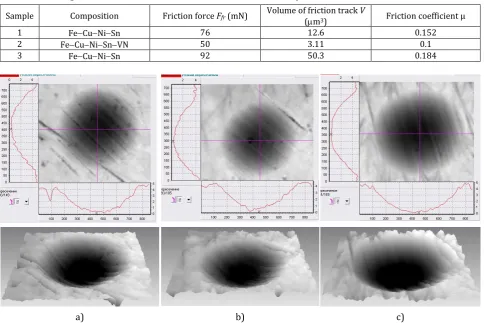Physico-mechanical and Tribological Properties of Fe-Cu-Ni-Sn and Fe-Cu-Ni-Sn-VN Nanocomposites Obtained by Powder Metallurgy Methods
Full text
Figure




Related documents
National Conference on Technical Vocational Education, Training and Skills Development: A Roadmap for Empowerment (Dec. 2008): Ministry of Human Resource Development, Department
UDL provides the following three guiding principles to consider when planning lessons so that children are properly stimulated in ways that allow for learning: (1) multiple means of
combines all of the essential language skills (listening, reading, speaking, and writing),.. students will build confidence and thus become empowered and
The projected gains over the years 2000 to 2040 in life and active life expectancies, and expected years of dependency at age 65for males and females, for alternatives I, II, and
Description: Biographical notes; correspondence; contracts; certificates of registration; manuscripts and copies of Paul de Marky’s compositions and arrangements, including
In Afghanistan, this is a qualification through either the Institute of Health Sciences or the Community Midwifery Education programme.. Skilled
19% serve a county. Fourteen per cent of the centers provide service for adjoining states in addition to the states in which they are located; usually these adjoining states have
Palestinian cause, dedicated a chapter entitled “Palestinian Rights” partly to refute that allegation in particular that denies Palestinians historical rights in the land
![Fig. 5. TEM images of the structure (a, c) and the corresponding electron diffraction patterns (b, d) of 49.47Fe–31.04Cu–8.73Ni–7.76Sn–3VN composite and CEM images of the structure 51Fe–32Cu–9Ni–8Sn composite (e, f) [14]](https://thumb-us.123doks.com/thumbv2/123dok_us/9806768.1966602/9.595.68.542.70.360/structure-corresponding-electron-diffraction-patterns-composite-structure-composite.webp)